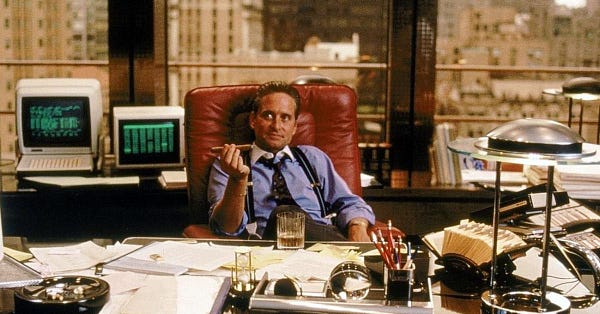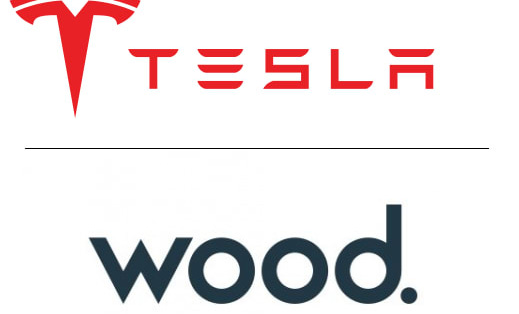Weekly Bulletin #24
Burry's Portfolio Dump Is Not As It Seems | Commodities | HY Credit | PE & Stagflation | Tiger Global, Lamb Weston and... DOLE?
Disclaimer
Value Situations is NOT investment advice and the author is not an investment advisor.
All content on this website and in the newsletter, and all other communication and correspondence from its author, is for informational and educational purposes only and should not in any circumstances, whether express or implied, be considered to be advice of an investment, legal or any other nature. Please carry out your own research and due diligence.
Following my vacation break last week, I’m pleased to be back with the latest Weekly Bulletin. For this week’s issue, I thought I’d highlight some stories and situations that have piqued my interest over the past week or so.
Burry’s Portfolio “Dump” Is Not As It Seems
One noteworthy piece of news from the last week has been the various media reports that Dr. Michael Burry “dumped” his ~$200m portfolio of US equities (as disclosed back in Q1), and now holds just one stock according to his firm’s latest 13F filing for Q2, a ~$3.3m position in Geo Group Inc (GEO), a US private prison operator.
There have been all kinds of quick takes online about what Dr. Burry’s latest portfolio positioning means, and how it is an ominous or bearish signal from the renowned “Big Short” investor. However as is often the case, these latest headlines are somewhat misleading. While Burry did liquidate all of his US-listed equity holdings held during Q1, he has not dumped his entire portfolio - it’s worth remembering that 13F filings offer an incomplete picture of an institutional investor’s portfolio as under SEC regulations, institutions are only required to disclose long positions for US equity holdings (as well as options and convertible positions), while short positions and non-US equity positions are not disclosed.
So far from dumping his portfolio, Burry’s firm continues to hold ~$60m in non-US equities (excluding GEO), as follows:
Source: TIKR.com
Of the 9 non-US holdings, 6 are Japanese-listed, 2 are UK-listed and 1 is South Korean (Burry’s Japanese investments were previously well reported on in 2020 amid the COVID market crash). The one holding that stands out to me as perhaps most interesting is SCS Group Plc (SCS.LN), which is a micro-cap UK home furnishing and flooring business, specialising in sofas and carpets.
SCS appears to be both a contrarian and deep value play. Given the UK is experiencing surging inflation, a weakening consumer and retail backdrop, and a cost of living crisis, a home furniture business does not seem like the greatest investment story at present. However, there is a potentially interesting value story for SCS; at its current market cap of ~£54m it trades at a ~24% discount to its ~£70.8m in net cash, is debt-free, offers a dividend yield of 7.6% and has initiated a £7m stock buyback programme that equates to ~12%+ of its market cap. Furthermore, according to its full year trading update of ~2 weeks ago (so well into the cost-of-living crisis), the company reported profit ahead of expectations and indicated a confident outlook against the challenging consumer backdrop.
Whether SCS can weather a deteriorating UK consumer environment remains to be seen but Burry’s continued ownership of it while he has sold out of dominant large cap tech names such as Alphabet, Meta Platforms and Booking Holdings seems to offer a certain insight into Burry’s current thinking - niche, overlooked and idiosyncratic situations may offer better risk-adjusted opportunities in the current market environment.
Record outflows from commodity ETPs obscure long-term demand
An FT article from last week on the topic of commodities caught my attention, given my recent thoughts on how the market is overlooking the precarity of supply in assuming a recession implies demand destruction and a collapse in commodity prices.
The FT piece reported how investors pulled record amounts of money out of commodity exchange traded products (ETPs) in July, motivated by recessionary concerns. However as I discussed in my TAM-Out Time & The Precarity of Supply piece in Weekly Bulletin #23, this move by investors would seem to ignore the constrained fundamental supply set-up for many key commodities.
A quote from Bob Minter, director of exchange traded fund strategy at Abrdn, succinctly captures the point with regard to the shortage of green metals to meet energy transition requirements (something I’ve discussed previously), but which I believe can also be applied to commodities generally:
“Our view of the recession is that it is a short-term issue that is affecting sentiment, but after that we should see metal supply is at all-time lows and no one is long.”
The remark about metals supply being at all-time lows is interesting; we’re at a point currently where the supply of many commodities remains constrained, having never fully caught up with demand post-COVID (and further exacerbated by war and weather this year). This is clearly evidenced by the current inflation rate and the still-elevated price of many commodities well above pre-COVID price levels. Yet with current recessionary fears, energy costs and the recent rollover in market prices, production of these still-constrained commodities is now likely set to decline AGAIN. A question worth pondering here then is does it make sense for the market to conclude that further disruption to and reduction in the supply of essential commodities will resolve commodity price inflation?
My sense is that constrained supply will likely overwhelm any near-term demand destruction from recessionary concerns, resulting in persistently high commodity prices. Equity names linked to constrained-but-essential commodities look very interesting to me in this light.
Volatility investor warns of false dawn for US equities market
Regular readers might recall that high-yield credit spreads are something I monitor given their relationship to and bearing on equity markets. In this context, an FT article from earlier this week caught my attention. The piece featured commentary from Paul Britton, founder of Capstone Investment Advisors, a volatility-focused hedge fund, about how looming problems in the corporate debt market will likely spark another downturn by the end of this year - some notable excerpts from the piece:
“We are getting close to the end of phase 1, a repricing of growth. Phase 2 is more interesting to me. It is more of a credit cycle,” Britton said. “People are upset that they’ve lost money, but there is no fear.”
“The headlines in Q4 and Q1 are going to be of people having trouble refinancing, and nervous investors will start selling,” he said. “By Q4 or Q1 it will switch to fear.”
Problems are likely to be concentrated among companies rated below investment grade, he added. “Leveraged loans are the top of my list, and high-yield debt from anyone that doesn’t have cash flow,” he said.
I’m increasingly of the view that the broader high yield complex (comprising high yield bonds, leveraged loans, CLOs, private credit and BBB bonds ripe for downgrade in a recessionary scenario) may trigger a mass credit/liquidity crunch given my views on inflation/stagflation and the confluence of adverse factors facing highly leveraged corporates - rising rates, input cost inflation, margin erosion and slowing growth.
In this context, Britton’s comments struck me as particularly interesting off the back of a recent Twitter Spaces discussion hosted by George Noble with Danny Moses, Porter Collins and Vincent Daniel, in which I had the opportunity to ask Collins and Daniel their views on the high yield market given clearly rising risks and their own track record as part of the “Big Short” credit trade in the previous cycle (Moses, Collins and Daniel all worked with Steve Eisman at FrontPoint Partners who correctly predicted the 2008 market crash, as profiled in Michael Lewis's book The Big Short).
The Spaces discussion can be found here and my question on the topic is around the 1 hour 52 minute, 30 second mark. Their comments on how they are thinking about the high yield space are very interesting in my view.
Money Pours Into Funds Targeting Solar Power, Cell Towers and Data Centers
The WSJ reported that PE majors including KKR and Brookfield Asset Management have raised a record amount, some $130bn this year, to invest in inflation-resilient infrastructure assets such as power plants, telecom towers and data centres. This caught my attention given my previous Real Asset Ownership Complex thesis and my recent piece on how the “smart money” (PE) appears to be betting on stagflation.
It is my continued view that the global economy is likely heading towards a stagflationary environment and given this outlook I believe that real assets (including essential commodities, real estate and infrastructure) and real companies will perform best in this next cycle (by “real” companies I mean those with actual assets and cash-flows that produce products that society needs, as opposed to speculative TAM/tech/convenience-type apps or “businesses”). It appears that the PE complex also shares this view.
Tiger Global Digs Potatoes
On a related note, I also read with both interest and some bemusement yesterday that one of Tiger Global’s newest positions is frozen potato supplier Lamb Weston Holdings (LW).
Many readers will know that Tiger Global has traditionally been a tech-focused HF that effectively morphed into a VC firm that funded some very speculative tech companies, with disastrous results (down ~50% in H1 this year). This makes its investment in LW somewhat peculiar.
LW is one of the world’s largest suppliers french fries and is an example of a “real” company as I describe above. The article suggests that this out-of-style bet for Tiger is perhaps a food inflation play, which makes some sense.
It is also interesting to think that if Tiger Global can get comfortable with one of world’s largest potato suppliers at ~16x NTM EBITDA, could it or HF peers perhaps get comfortable with DOLE, a Value Situations Model Portfolio name and the world’s largest fresh produce supplier at sub-7x EBITDA?
This Tiger/LW news also follows recently reported buy-out interest in DOLE’s smaller peer Fresh Del Monte Produce (FDP), which currently trades at ~10x. Notably the mooted buyer of FDP is an infrastructure fund, I Squared Capital. In this context, it’s worth noting again that DOLE is the largest fresh produce business globally, ~2x greater than FDP and owns a larger supply chain and distribution network. Given PE and HF interest in inflation-resilient assets, could DOLE itself at its currently depressed valuation be an opportune play on this theme?
Any Other Business
For this week’s AOB I’m sharing a recent Bloomberg Odd Lotts podcast with Bernstein Managing Director and analyst Bob Brackett. This is an excellent and wide-ranging discussion about the commodity space and the energy transition, with a focus on what people get wrong about, and why energy sources rarely, if ever, actually go away.
One quote stood out for me, as follows, which I think captures much of my recent thinking on commodities, inflation and demand destruction:
The one misconception out there is this concept when the demand for a product starts to fall, the price for the product starts to fall. But you know, ultimately if you think back to your classic Economics 101, the price of something is where marginal cost meets marginal supply. And if the marginal supply is running away from you, then there's no requirement that price fall.
This is well worth a listen.
Why Not Subscribe to the Paid Tier?
If you find the ideas in this newsletter interesting, please considering signing up to the newly launched Paid Tier.
You can read more about the paid offering here.
This newsletter is 100% reader supported and free from conflicts of interest or other commercial considerations. In writing Value Situations my job is essentially to generate ideas for subscribers that supplements their own idea origination process.
Furthermore, I believe the value proposition for paying subscribers is compelling. I am a former private equity/special sits investor that has worked with one of the largest alternative investment firms in the world, and so paying subscribers will be getting thoughtful, buy-side quality ideas and analysis for a very small fraction of the cost of employing a buy-side analyst full-time.
If you find this newsletter interesting, please also consider sharing it with friends and colleagues by clicking the Share button below.
Here’s what other investors are saying about Value Situations:






Value Situations was named as one of the Top 100 Must Follow Stock Research accounts by Edwin Dorsey of The Bear Cave Newsletter:
















